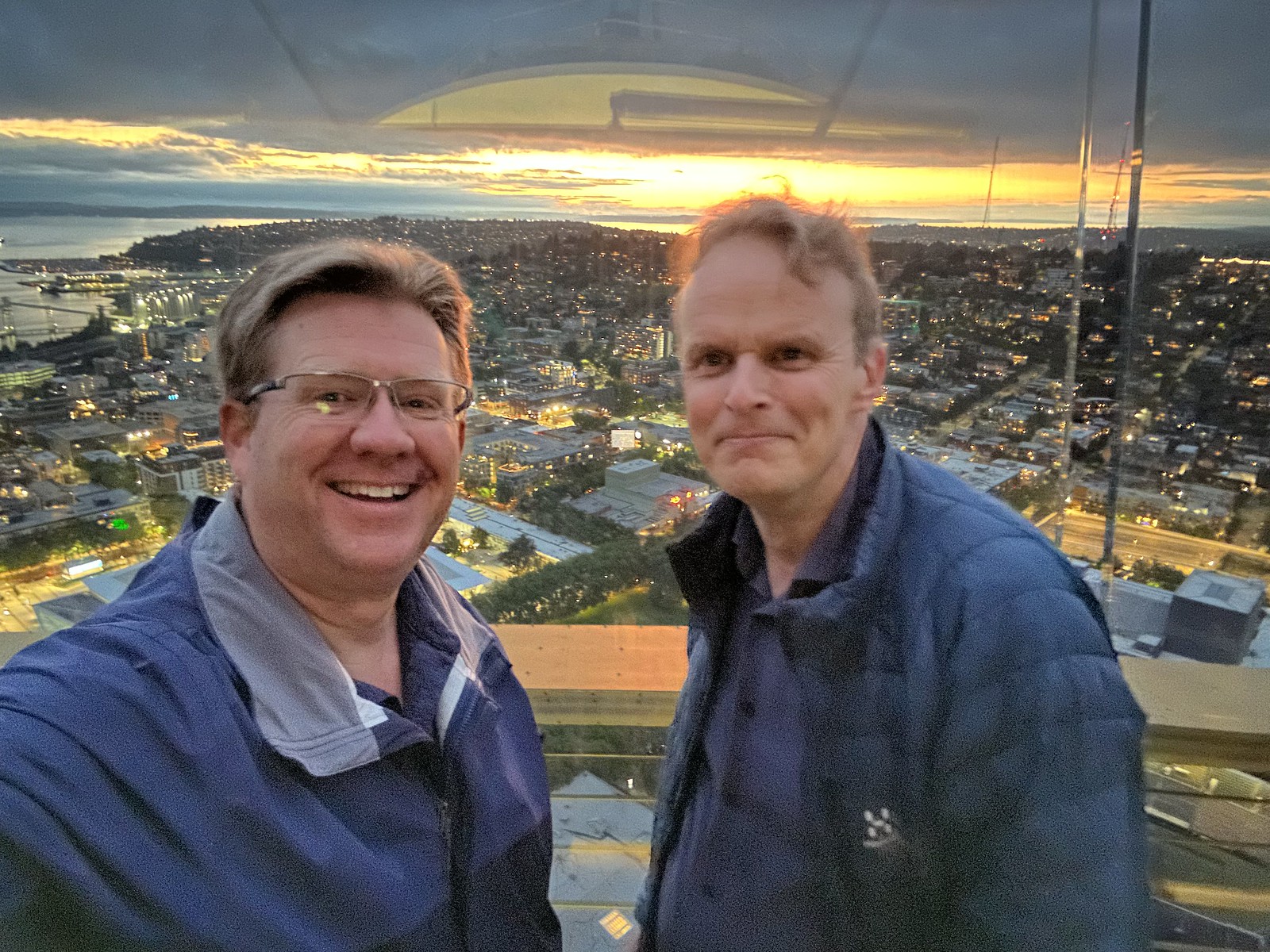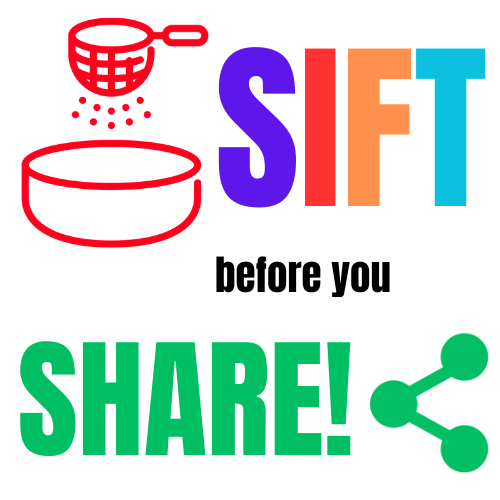Earlier this month, I had a wonderful opportunity to attend, participate in and learn from the unique “Teaching for Resilience: FinnishED Workshop” hosted by the Center for an Informed Public at the University of Washington as well as TIP Teachers (Teachers for an Informed Public.) The focus question of our two days of learning together was, “What can we learn from Finland to become more resilient to mis- and disinformation?” In this post, I’d like to summarize some of my key takeaways from as well as important resources shared at this workshop. In addition to this post, I invite you to check out the LONG “threads” of ideas and resources I cross-posted during the workshop to Twitter, Mastodon and Bluesky Social. I published over 80 photos from the workshop and my explorations in Seattle to this Flickr album, also recorded a 6 minute video reflection at the end of our second day of learning together. These and my other media literacy resources are shared on my Google Site, medialiteracy.wesfryer.com.
Dr. Mikko Salo and Faktabaari
One of the best aspects of this workshop experience was getting to know Dr. Mikko Salo, who is the co-founder of the Finnish media literacy organization, Faktabaari (Factbar in English). Mikko led one of our workshops on Thursday and joined in the learning in our other sessions on both Thursday and Friday. The English version of the Faktabaari website explains the organization’s role and primary activities:
Faktabaari is a Finnish fact-checking and digital information literacy service. Since 2014, it has regularly contributed to fact-based information circulation with innovative projects and fact-checks, notably to all national and European Parliamentary election debates with academically acclaimed quality and transparency standards.
Toimitus. (2019, April 3). FactBar. Faktabaari. https://faktabaari.fi/in-english/

The Faktabaari publication, “Digital Information Literacy Guide: A Digital Information Literacy Guide for Citizens in the Digital Age,” summarizes many of the key strategies and activities which Finland has added recently to their formal K12 school curriculum, as well as digital, media and information literacy skills the Finnish government seeks to intentionally cultivate in adult citizens of all ages.

From the Prologue of the Guide:
Digital information literacy is a modern civic skill that underpins participation in democratic decision-making. Finland is renowned for its high literacy rate, and the teaching of multiple literacies has been integrated into current curricula from early childhood education onwards.
However, on digital platforms such as TikTok, YouTube, Instagram and Facebook, children and young people are confronted with a bewildering flood of information that they may not be able to filter out with the skills they have acquired in the school community and at home: claims about products by influencers, search results tailored by commercial algorithms, cleverly scripted propaganda and authorisations to track online behaviour or physical movement in urban space hidden behind countless ’yes’ buttons.
It is therefore important to strengthen the digital information literacy of all the web users, especially young people, in order to identify how we are being influenced online.
Kivinen, K., Horowitz, M. A., Havula, P., Härkönen, T., Kiili, C., Kivinen, E., Pönkä, H., Pörsti, J., Salo, M., Vuorikari, R., & Vahti, J. (2022). Digital Information Literacy Guide.
I ardently believe MEDIA LITERACY is one of the most important skills we can help develop everywhere today: At school, at home, and in our communities. Finland’s example integrating media literacy education not only in schools but also within the cultural life of their nation is an important and powerful example we should both continue to study and seek to emulate.
Lateral Reading and CTRL-F Surveys
In addition to workshop sessions specific to Finnish education and approaches to media literacy, we also had opportunities to learn from Jevin West, the founding director of the Center for an Informed Public at the University of Washington. He is the co-creator of the website whichfaceisreal.com. There are multiple websites now which can be used to generate images of fake / imaginary people using AI algorithms. In my middle school lessons about Internet safety and security, I’m going to use this website next year (along with others like haveibeenpwned.com) to raise student and family awareness about these AI powered digital capabilities to trick and deceive others, as well as strategies to address them. (Like Password Managers: See my 2022 TEDxUCO talk, “Technology Fear Therapy,” for more on this.)

I was glad to learn that Jevin is the co-author of the book, “Calling Bullshit: The Art of Skepticism in a Data-Driven World,” which has related resources available on both callingbullshit.org and callingbull.org. I’ve added it to my personal media literacy reading list.
One of the “a-ha moments” I had participating in Jevin’s engaging workshop session on ChatGPT and generative AI was the importance of regularly engaging our students in HYPERLINKED WRITING. This is closely analogous to “Interactive Writing,” which I include as one of 14 different kinds of media projects students should learn how to create and share within the regular K12 school curriculum. (ShowWithMedia.com)
Jevin and other presenters at the workshop highlighted multiple times the importance of teaching students LATERAL READING skills. Among the challenges presented by generative AI platforms like ChatGPT today is “hallucination,” which can include the invention / use of fictitious sources. “Citing your sources” has always been emphasized in academic writing, but it’s been generally rare (in my experience) for teachers and professors to require students to include DIRECT HYPERLINKS to referenced sources. In learning to read laterally using an interactive writing platform (I’m thinking here of tools beyond Google Docs which are generally shared with more limited access rights) we can require our students to demonstrate their lateral reading skills. Referenced websites verifying the trustworthiness of a specific source can be provided by students and cross-checked by peers as well as teachers.
Another major takeaway for me from this workshop was the Canadian website and ongoing media literacy project, “CTRL-F: Find the Facts — Digital Media Literacy.”) In teaching my middle school media literacy unit on “Froot Loop Conspiracy Theories” (focusing on the Apollo Moon Landings and hoax allegations) I’ve wanted to use a survey instrument to conduct pre- and post-unit evaluations of student media literacy skills. Turns out, CTRL-F provides Google Form versions of their project surveys which anyone (with a free login) can use! I might use these with my own middle schoolers next year. They also have an excellent “Example Bank” of media literacy discussion prompts which I want to utilize.
SIFT: What am I looking at here?
I also LOVED learning more about the SIFT web literacy framework, created by Mike Caufield. (@holden) Because of a university employee union strike, Mike (who is employed by CIP at UW) was not able to join us in person for the workshop, but Liz Crouse (@lizjcrouse) did a super job pinch hitting for Mike. SIFT is the main media literacy strategy, along with “lateral reading,” which I teach my middle school students. When encountering an unfamiliar source and especially emotionally engaging information artifact, SIFT directs learners / citizens to:
- Stop
- Investigate the Source
- Find Trusted Coverage
- Trace to the Original
Instead of asking students at the start of a SIFT investigation, “Is this true?” Mike and Liz now encourage teachers to ask, “What am I looking at here?” This is a small but VERY important difference. Context for media and web literacy is essential, and is a BIG part of what we seek when “SIFTing” for trustworthy and reliable information. I’m definitely using this technique next school year with my students!
Learning From Finland’s Example
Our workshop focus in day 2 was learning via a Zoom videoconference to Madrid, Spain, from Dr. Kari Kivinen. According to his blog’s about page:
PhD Kari Kivinen started as the Education Outreach Expert of the EUIPO OBSERVATORY in the beginning of October 2020. He is involved e.g. with the Intellectual Property in Education Network-project, which promotes creativity, innovation, entrepreneurship and responsible digital engagement among young Europeans.
He has worked in international schools in Finland, Luxembourg and Belgium. He is the former Secretary-General of the European School system and ex-Head of the Finnish French school of Helsinki.
About Kari Kivinen. (2012, April 5). Kivinen. https://kivinen.wordpress.com/about/
Kari provided a comprehensive overview of the Finnish approach to education, which is culturally and ethically so much more humane, supportive of children, and ethically advanced that our current educational culture in the United States. The relatively recent addition of media literacy to the curriculum and pedagogy of the Finnish educational system was our primary focus, but it was both overwhelming (since there are so many complex factors at play which we in the USA need to address and change) as well as good to consider the multitude of insights Kari offered us.
Helping Students Care About Truth
One of the workshop sidebar conversations, which we also discussed a bit with the entire group at one point, was how to “help students CARE about the truth.” Nihilism is a philosophic perspective which I perceive to be increasingly common in our polluted, fractured, and complex information landscape. A variety of bad actors on social media, including Russian agents, continue to actively work to subvert trust and faith which citizens in the United States have in not only our government but in a variety of institutions.
Kari as well as Miko talked specifically about different measures of societal trust. While Finland has higher levels of societal trust in institutions generally than the USA, this is a big challenge across all the nations of the West. This is an issue I want to explore further, since trust in government and institutions as well as agreement on basic values as well as perceptions of truth are foundational aspects of any civil society. These need to be considered as we develop and facilitate our curricula in our respective schools and communities, and seek to cultivate the skills of effective citizenship.
I am so thankful to have had this opportunity to attend the FinnishEd workshop at CIP UW! I plan to continue being an active participant in TIP Teachers, and hope to continue learning with the faculty and staff of The Center for an Informed Public at UW.

If you enjoyed this post and found it useful, subscribe to Wes’ free newsletter. Check out Wes’ video tutorial library, “Playing with Media.” Information about more ways to learn with Dr. Wesley Fryer are available on wesfryer.com/after.
On this day..
- KidBlog Update – 2015
- A Radio Spot from Sir Ken Robinson Reminding Voters About the Importance of Teachers – 2013
- Visual Notes and Narrated Art: Benefits of Student-Created Videos on YouTube – 2013
- What Makes an Effective Technology Committee in Education (v.2) – 2012
- Social networking sites (SNS), Convivial Technologies and Digital Discipline – 2011
- Limewire in the classroom and the principal’s office – 2010
- First YouTube video published directly from the iPhone GS (Irrelevant Paper) – 2009
- links for 2008-06-20 – 2008
- Podcasting facilities to be provided at NECC 2008 – 2008
- Changing the Face of Our Educational Practice Using Web 2.0 Technologies – 2007
